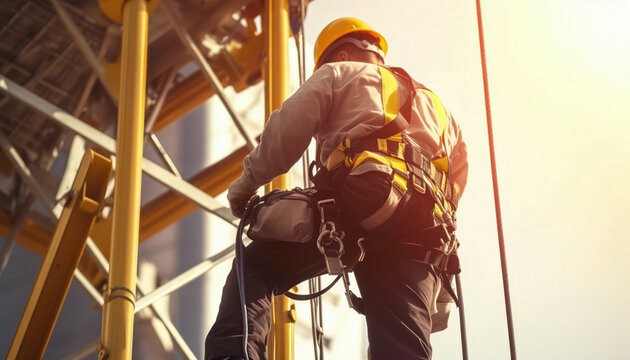


 349,500 Offered Certificates
349,500 Offered Certificates
 24/7 Online Training
24/7 Online Training
 Money Back Guarantee
Money Back Guarantee
 Fully Accredited Courses
Fully Accredited Courses

Created at: 22-02-2025 16:03
In high-risk work environments such as construction sites, effective communication plays a critical role in ensuring the safety of workers, particularly when working at heights. The potential for accidents increases significantly in these conditions, making it paramount that teams understand the importance of clear instructions, seamless teamwork, and well-practiced emergency signaling. This blog post delves into how communication enhances safety protocols in working at heights and offers practical strategies that organizations can implement.
Working at heights poses various risks, including falls that can lead to severe injuries or fatalities. Poor communication often exacerbates these risks. A study of workplace incidents has shown that miscommunication is a leading factor in accidents when individuals are working at elevation. Ensuring that all members of the team are on the same page is vital to minimizing these dangers.
Effective communication begins with clear instructions. When workers receive specific, unambiguous information about their tasks, the likelihood of mistakes decreases significantly. Here are some methods to enhance clear instructions:
Teamwork is essential in working at heights, where one individual's actions can significantly impact the safety of others. Strong communication fosters collaboration and unity among team members. Here’s how to cultivate teamwork through effective communication:
Even with the best safety measures in place, emergencies can still occur. Effective emergency signaling ensures that everyone knows how to react swiftly and efficiently in a crisis. Consider these best practices:
Illustrating the significance of communication in keeping teams safe while working at heights involves sharing real-world case studies. These examples showcase how effective communication can mitigate risks:
Investing in working at heights training that focuses on effective communication is essential for any organization. Programs should cover:
By providing workers with certified working at heights training, businesses can ensure that their teams are equipped to communicate effectively and prioritize safety.
In conclusion, effective communication is a cornerstone of safety when working at heights. By fostering clear instructions, enhancing teamwork, and establishing robust emergency signaling, organizations can significantly reduce the risk of accidents. Investing in comprehensive training programs, such as the working at heights safety course, can provide workers with the necessary skills to navigate high-risk environments safely. For guidance on improving workplace safety through communication, reach out to [email protected].